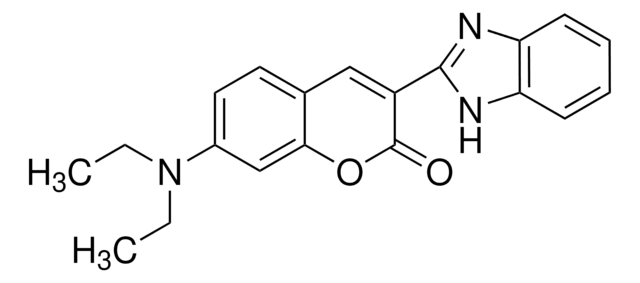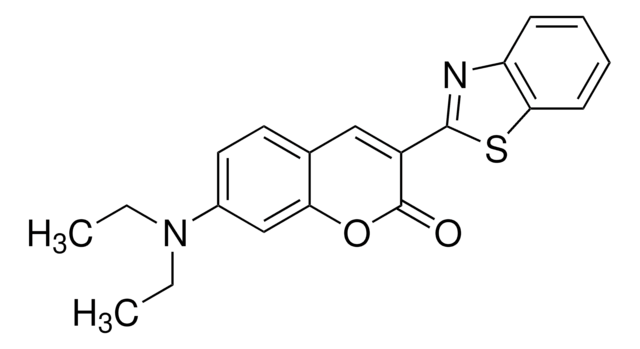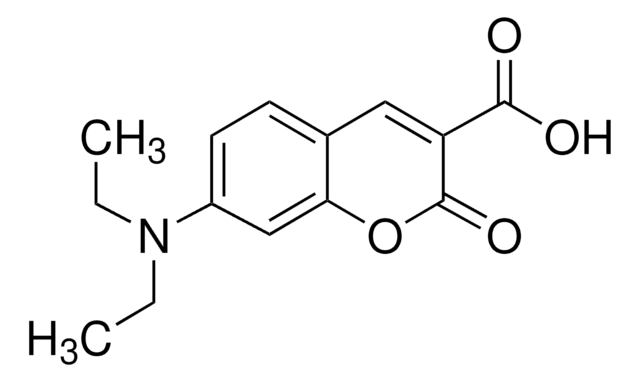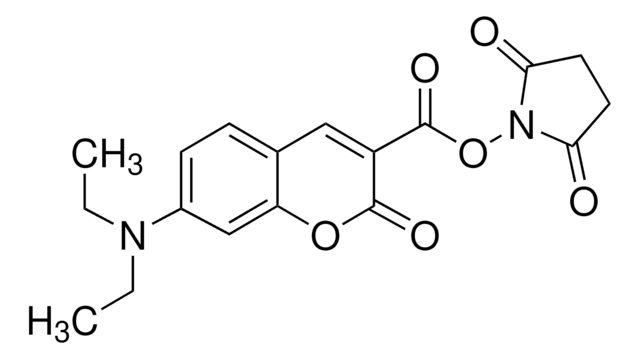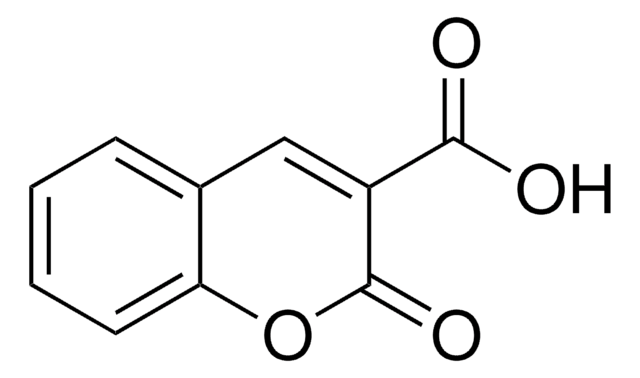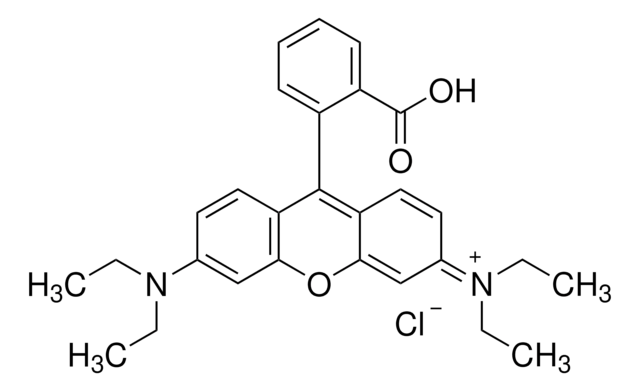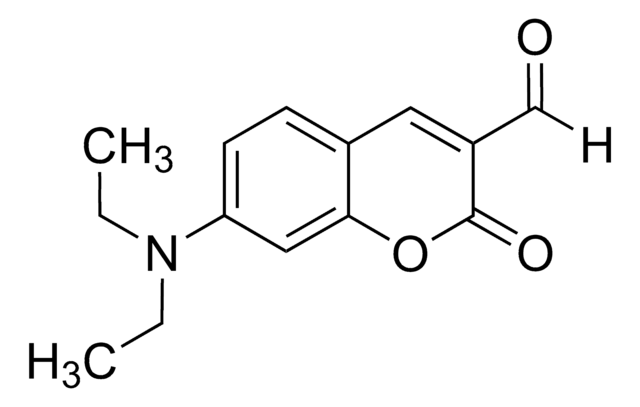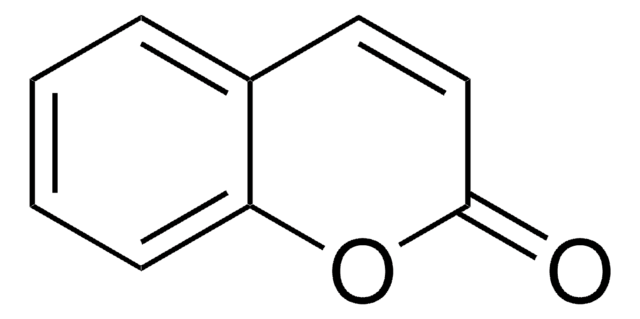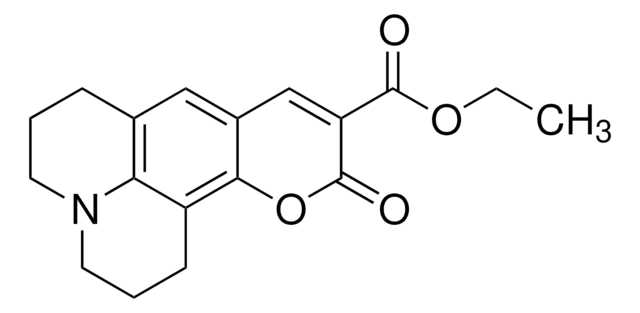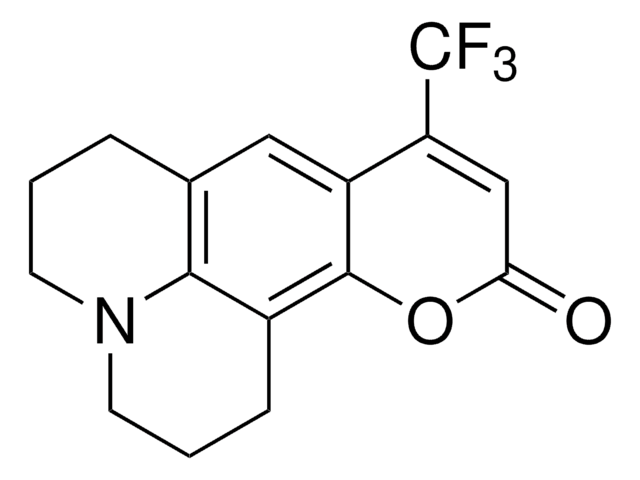About This Item
Recommended Products
form
powder
Quality Level
composition
Dye content, 97%
mp
240 °C (lit.)
λmax
443 nm
ε (extinction coefficient)
≥26000 at 441-445 nm in ethanol at 0.01 g/L
application(s)
diagnostic assay manufacturing
hematology
histology
storage temp.
room temp
SMILES string
OC(=O)C1=Cc2cc3CCCN4CCCc(c2OC1=O)c34
InChI
1S/C16H15NO4/c18-15(19)12-8-10-7-9-3-1-5-17-6-2-4-11(13(9)17)14(10)21-16(12)20/h7-8H,1-6H2,(H,18,19)
InChI key
KCDCNGXPPGQERR-UHFFFAOYSA-N
Related Categories
General description
Application
It is suitable to study photo-induced charge injection into other metal oxides such as TiO2, ZrO2, and ZnO.
wgk_germany
WGK 3
flash_point_f
Not applicable
flash_point_c
Not applicable
ppe
Eyeshields, Gloves, type N95 (US)
Certificates of Analysis (COA)
Search for Certificates of Analysis (COA) by entering the products Lot/Batch Number. Lot and Batch Numbers can be found on a product’s label following the words ‘Lot’ or ‘Batch’.
Already Own This Product?
Find documentation for the products that you have recently purchased in the Document Library.
Customers Also Viewed
Our team of scientists has experience in all areas of research including Life Science, Material Science, Chemical Synthesis, Chromatography, Analytical and many others.
Contact Technical Service